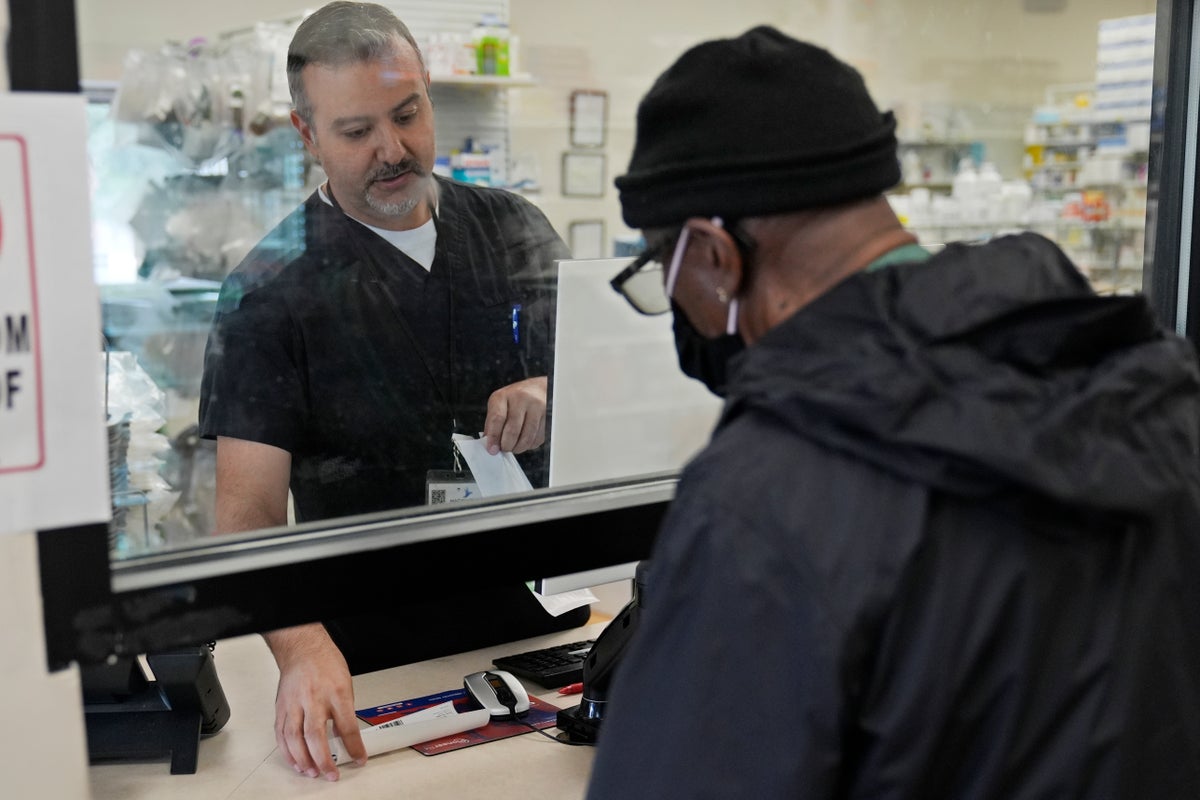
Parts of the north side of Montgomery are defined by what it has lost: restaurants, grocery stores and a convenient pharmacy, the latter of which closed five years ago.
People who still live in the historically Black neighborhood of Newtown, like Sharon Harris, are frustrated. She goes to a different location of the same pharmacy chain, which is four miles from her home.
“You have to come back sometimes,” she said, “and then they wait so long to fill the prescription.”
In cities across the U.S., major retail pharmacies have closed hundreds of stores over the past few years and independents can’t always afford to stay open. That can leave residents of color without easy access to a business that provides not only prescriptions but also fundamental public health services like vaccinations, over-the-counter medicines and even food.
Closures create “a situation where there’s not just (a lack of) investment in terms of pharmacy development and expansion, but there’s no incentive to stay in those neighborhoods,” said Dima Qato, a professor of clinical pharmacy at the University of Southern California who has studied pharmacy access.
And an Associated Press analysis of licensing data from 44 states, data from the National Council for Prescription Drug Programs and the American Community Survey shows residents of neighborhoods that are majority Black and Hispanic have fewer pharmacies per capita than people who live in mostly white neighborhoods.
MAC Pharmacy is the only one serving about 20,000 people in a majority Black ZIP code in Cleveland. George Tadross, the part-owner and pharmacy manager, said he is adamant about making things as as easy as possible for his mostly older customers — sometimes by organizing their medications by day for them.
“You have to have a pharmacist to talk to,” he said. “My philosophy in the pharmacy business is you know your doctor, he knows everything about you. You need to know your pharmacist as well (because) the pharmacist is the only one that sees the whole medical treatment plan you have.”
Pharmacists play a role in managing chronic diseases like diabetes and heart-related issues, which Black and Hispanic people are more likely to be diagnosed with.
And when pharmacists or pharmacy technicians reflect their customer base — by speaking the same language or understanding the community — it can be easier to build a strong rapport and trust, said Jasmine Gonzalvo, who teaches at Purdue University’s College of Pharmacy and has researched the needs of Spanish-speaking patients at pharmacies.
She noted that if people don’t feel comfortable asking questions about the medication, then it might mean they don’t take it or don't take it correctly.
“You don’t get a refill,” Gonzalvo said, “simply because there were barriers in the way of your communicating and feeling safe in that relationship with your pharmacist.”
That's why Bert's Pharmacy in Elizabeth, New Jersey, has “Spanish- and English-speaking staff all the time,” said owner and pharmacist Prakash Patel said. His business is located in an ZIP code where nearly 70% of the residents are Hispanic.
“We want to make sure, too, they understood everything,” Patel said. “We have Spanish-language labels for them, we print all the instructions in Spanish for them.”
In Montgomery, where Harris lives, the city is working on a development plan for the north side. A retail analysis in the plan shows a small pharmacy could generate $1.5 million in sales a year.
“There’s an opportunity there because you have what I call a captive market,” said Bob Gibbs, the director of Gibbs Planning Group, which did the analysis. “People that live in a lot of these neighborhoods have limited access to transportation … and they’re very loyal to local businesses that will treat them with respect.
“They will go out of their way just to go there. And they just don’t like having to drive … two miles to go to a drugstore. That’s unfair.”
Harris, though, doesn’t have much hope a new pharmacy will open.
“I don’t see it,” she said. “As long as they have (that CVS) they think it’s okay. … Everybody is waiting for them to do something on this side.”
___
Associated Press data journalist Kasturi Pananjady in Philadelphia and videojournalist Shelby Lum in New York contributed to this report.







